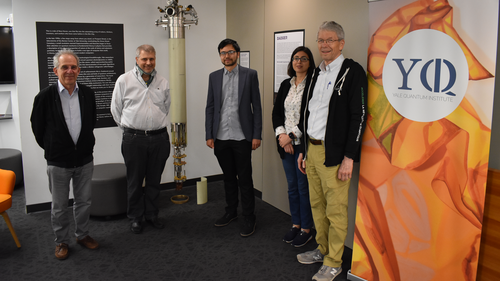
On Friday, August 4, James Teoh successfully defended the thesis “Error Detected Operations for Bosonic Quantum Information Processing” (advisor: Robert Schoelkopf).
Teoh says, “To build a useful quantum computer, we not only need enough qubits but also for their error rates to be low enough to run an algorithm from start to finish and get the correct result. There is currently around a 10 order of magnitude difference between the error rates of the best experimental qubits and the error rate required for e.g. Shor’s algorithm. Quantum error correction in theory provides a means to bridge this gap by introducing many more qubits, most of which just check and correct for errors in the other qubits, but demonstrating quantum error correction remains a major challenge. My thesis work describes how to realize a new approach to quantum error correction, called erasure qubits, proposed specifically for superconducting qubit devices. By using an encoding known as the dual-rail code, qubits can be engineered to ‘self-report’ their errors as they occur, which makes the overall task of quantum error correction significantly easier.”
James will work as a Quantum Engineer at Quantum Circuits Incorporated.
Thesis Abstract:
Any useful quantum computer is expected to require quantum error correction. This means a quantum algorithm can still reliably give the correct answer despite individual qubits suffering from decoherence. But what can we do with quantum error detection? This is subtly different in the sense that we do not need to recover the all the quantum information once an error has been detected. It can merely suffice to reset the faulty qubits and make a note of exactly where and when they had errors. Experimentally, this is much easier to implement, especially when our qubits are cavity qubits in a superconducting platform. I’ll show how error-detection can be used for several quantum information processing tasks such as high-fidelity quantum state transfer through very lossy links and error-detected two-qubit gates. Finally, I’ll show how error-detection can be used to realize a new erasure qubit – the dual-rail cavity qubit, which dramatically eases the task of building a fully error-corrected quantum computer.